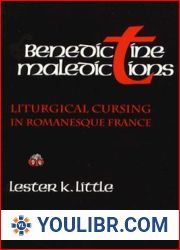
BOOKS - Benedictine Maledictions: Liturgical Cursing in Romanesque France


US $6.87

600999

600999
Benedictine Maledictions: Liturgical Cursing in Romanesque France
Author: Lester K. Little
Year: January 1, 1993
Format: PDF
File size: PDF 33 MB
Language: English
Year: January 1, 1993
Format: PDF
File size: PDF 33 MB
Language: English
and "'May they be cursed in the chest and the heart, cursed in the stomach, cursed in the blood, cursed in the hands and feet and each of their members. and " Monks in medieval France lay flat before the altar as they intoned these maledictions laced with biblical quotations or and "May their children be made orphans and their wives widows and " (Psalm 108:9). In this long-awaited book, the result of more than a decade of research, Lester K. Little reconstructs and explores the phenomenon of officially sanctioned religious cursing in medieval Europe. He focuses on a church service, called in Latin either clamor or maledictio , used by monastic communities (primarily in Francia) between approximately 990 and 1250. Threatened by bands of heavily armed knights in a period of incessant civil strife, communities of monks, nuns, and cathedral clerics retaliated by cursing their enemies in a formal religious ceremony. After presenting the formulas the monks used in such cursing, Little explores the social, political, and juridical contexts in which these curses were used and explains how Christian authorities who condemned cursing could also authorize it. He demonstrates that these Benedictine maledictions often played a decisive role in resolving the monks' frequent property disputes wit local notables, especially knights. Little's approach to his subject is topical. After determining the clamor's sources, he takes up its kinship with such related liturgy as the humiliation of saints and then shows where and to what end it was used. By the conclusion of his work, he has recreated the whole culture of the medieval clamor, and in the process he has illuminated many other aspects of medieval social and legal culture.






